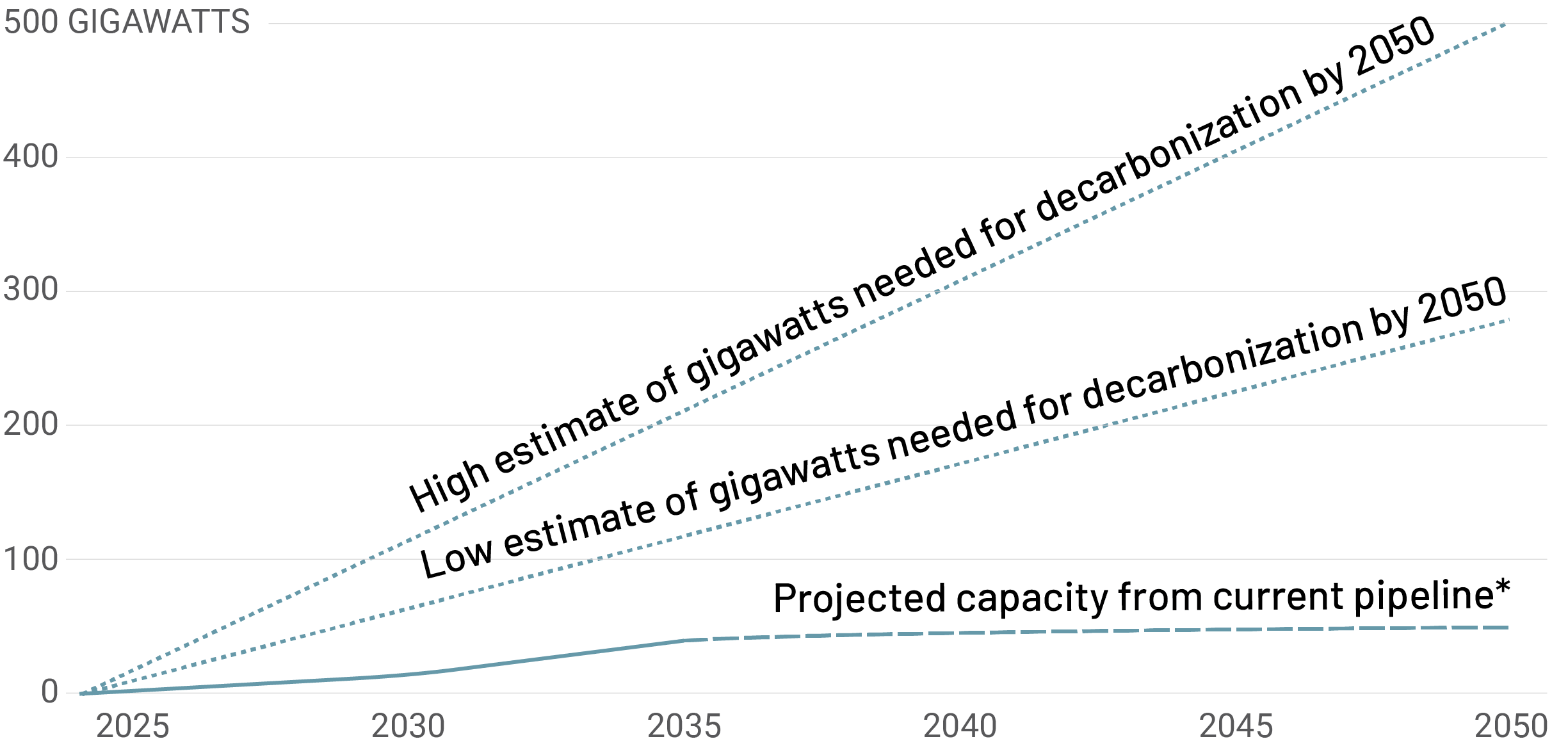A Federal Offshore Wind Authority: A Public Moon Shot for Offshore Wind
The offshore wind industry is under attack. The Trump administration has cancelled hundreds of millions in public support, halted leases for new projects, and even attempted to stop a project that was 80 percent completed. Offshore wind is vital to any hope of decarbonizing the US economy because of both projects’ scale and proximity to dense population centers with high electricity needs.
However, even before the outright attacks on the industry, offshore wind has been slow to roll out because the industry lacked the coordination support necessary to execute these highly complex projects. The United States needs somewhere between 270 and 485 gigawatts (GW) of offshore wind to decarbonize by 2050; however, based on states’ current plans, only about 50 GW is planned to be online.
The US is far behind offshore wind decarbonization targets.


Preparing for Acceleration—a Federal Offshore Wind Authority
We propose that a future administration establish a federal Offshore Wind Authority to supercharge buildout and deliver affordable electricity. With so much time lost, any future administration will have to redouble efforts to unleash the sector. Creating a public entity to marshall offshore wind could accelerate buildout and drive down costs.
This strategy is not new. The federal government has stepped in for other “Moon Shot” challenges when public action was needed to bring technologically novel and important sectors to maturity like during World War II or rural electrification.
Unleashing the Offshore Wind Supply Chain
A federal Offshore Wind Authority is an opportunity to unleash integral clean energy in a coordinated manner, alleviating bottlenecks and ensuring that communities, workers, and the environment are prioritized. There are three key places where the Authority can intervene:
- Offshore wind projects: Offshore wind projects and contracts are falling apart across the board as inflation rises and supply chains fail, meaning that the companies interested in development no longer see it as profitable. The Authority could ensure a stable baseline of offshore wind projects to help mature the US sector.
- Offshore transmission grids: The United States’s current model devolves the buildout of the offshore grid to individual generation developers; the costs and delays incurred by interconnecting these projects have hampered buildout. The Authority could pre-build offshore transmission to accelerate project deployment, lower collective costs, and limit overbuilding.
- Supply chain manufacturing: Right now, building offshore wind requires several domestic manufacturers to, in near unison, commit to construction without certainty. The Authority can stabilize the supply chain by taking equity stakes or leveraging procurement. For example, the Authority could commission new vessels and contract them at fair rates.
Now is the time to plan. A future administration committed to the energy transition, low-cost energy, and good jobs could accelerate the offshore wind industry via the Offshore Wind Authority.



